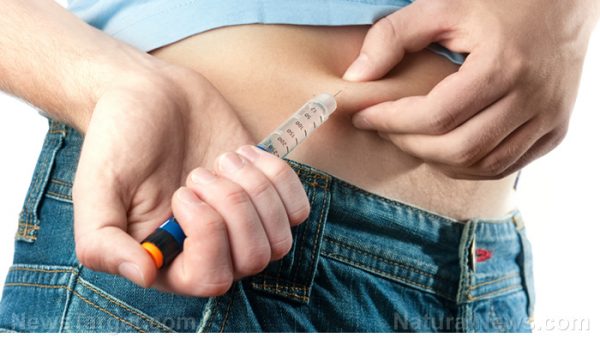Diabetic prepper? This may be the most important article you ever read
05/15/2017 / By Jayson Veley

Whether it’s the result of an EMP strike, a nuclear attack or some kind of zombie apocalypse, people across the country are vigorously preparing for life after society collapses like a house of cards. Many Americans have spent thousands of dollars on underground bunkers that they can retreat to should the outside world become too dangerous. Others have spent weeks planning out elaborate escape routes and rendezvous points so that they will have a place to meet up with family and friends should traditional transportation become impossible. But while this is all well and good, what is someone supposed to do if they have a condition that requires society to be intact in order to obtain the necessary treatment?
According to the Centers for Disease Control, 29.1 million Americans had diagnosed or undiagnosed diabetes as of the year 2014, a number equal to 9.3 percent of the population. [RELATED: Read about the top five natural substances that could cure type 1 diabetes].
If someone who is living with diabetes is dependent on insulin, then the financial burden can be quite harsh, considering the fact that vials of insulin can cost $200 to $300 each. So, if the entire economy collapses along with society itself, how is a diabetic supposed to survive in a post-apocalyptic world?
If you are a diabetic, the best way to handle being in a life or death situation such as the one described above is to not put yourself in that situation to begin with. A world without insulin as a diabetic would undoubtedly be extremely challenging, so the best thing anyone can do is prepare ahead of time and take precautionary measures.
The power of the elements: Discover Colloidal Silver Mouthwash with quality, natural ingredients like Sangre de Drago sap, black walnut hulls, menthol crystals and more. Zero artificial sweeteners, colors or alcohol. Learn more at the Health Ranger Store and help support this news site.
A few weeks ago, a contributor to The Survivalist Blog described a scenario in which he was talking to his doctor about the overwhelming cost of insulin. Much to his surprise, the doctor informed him that Walmart sells insulin over-the-counter without any questions asked for as little as $28. The doctor said that all he had to do was go to a Walmart pharmacy and ask for a vial of Novolin R insulin, a solution identical to the more expensive Humulin R, which costs roughly $150 per bottle.
Better still, Walmart pharmacies that sell over-the-counter insulin allow consumers to purchase up to four vials at a time, providing diabetic preppers with an incredible opportunity to stock up in a relatively short amount of time. Many Walmart stores even sell other diabetic care products, such as syringes, meters and test strips, all of which are inexpensive and easy to purchase.
The downside, however, is that not all states allow Walmart stores to sell insulin over-the-counter. People are encouraged to check online or visit their local Walmart shopping centers for more information.
As with the purchase of any other medication, it is still important to know that what you are putting into your body is safe. Carmen Smith of Cleveland was another diabetic who eventually realized that she could purchase insulin from Walmart at a much lower cost and without a prescription. However, unlike the contributor for the Survivalist Blog, Smith didn’t have nearly as smooth an experience.
Unsure of the correct dose, Smith used the amount a doctor had prescribed her years before. Describing what it was like when she didn’t get the dose of her insulin injections correct, she said, “It’s a quick high and then, it’s a down. The down part is, you feel icky. You feel lifeless. You feel pain. And the cramps are so intense — till you can’t walk, you can’t sit, you can’t stand.” She went on to say that because she was forced to guess how much insulin she should inject herself with, Smith had to visit the emergency room a number of times over the following years.
Still, the fact that many Walmart stores sell non-prescription insulin is a little known fact that may very well help millions of diabetic preppers across the country.
Sources:




















